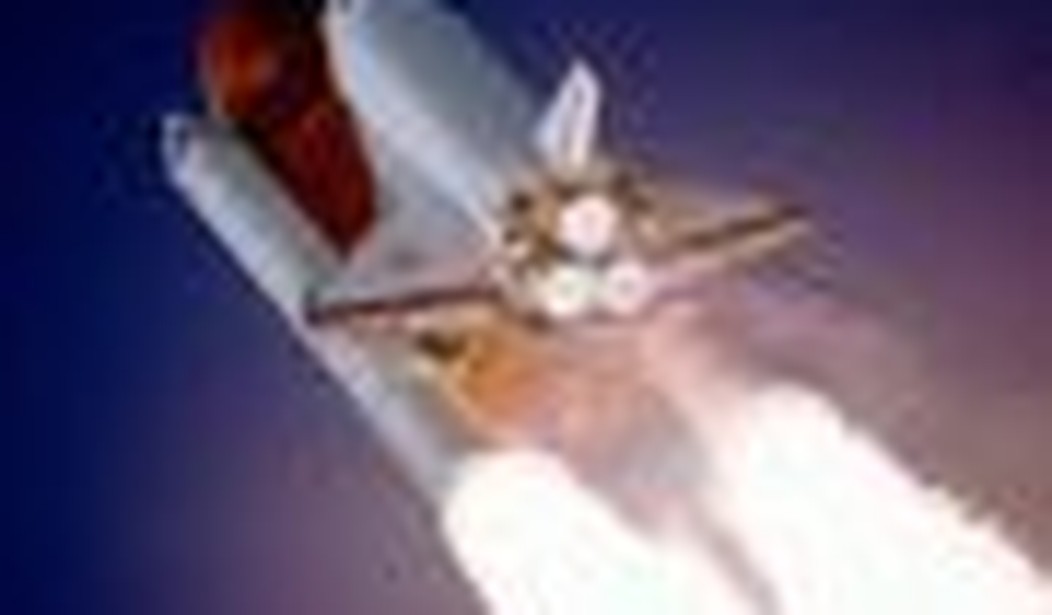As if the Obama administration didn’t have enough foreign policy problems, a new one has cropped up in the past few days and it could affect its NASA headaches, as it has to make decisions about the future of the American government’s human spaceflight program, on the basis of the report of the Augustine panel, due to arrive this month.
The problem, of course, is much larger than human spaceflight, but this will only exacerbate the latter issue.
A few days ago, Israeli Prime Minister Binyamin Netanyahu paid a visit to Vladimir Putin in Moscow, apparently with an interesting diplomatic gift: “Netanyahu has handed the Kremlin a list of Russian scientists believed by the Israelis to be helping Iran to develop a nuclear warhead. He is said to have delivered the list during a mysterious visit to Moscow.”
If true, think through the implications of this.
First, it means that Russia apparently has no problems with Iran developing a nuclear weapon and, in fact, is supportive of it. That means, in turn, that any hopes that the Obama administration had of getting their support for a sanctions regime with bite to prevent that are a chimera, despite the “smart diplomacy” and the “reset button.”
But it hints at much more profound things.
Israel, unlike almost any other nation in history (with the exception of our own) — and despite its unjustly sullied international reputation of being the equivalent of the Nazis, who brutally imprisoned many of its current residents (though fewer with every year as they die off) and slaughtered their relatives, over six decades ago — always takes great pains to not only minimize civilian casualties in its ongoing war with those who seek to wipe Israel from the map of the Middle East, but often risks and even sacrifices the lives of its own soldiers to do so.
For example, Israel, as the U.S. has done in its own history (for example in World War II Japan bombings), warns civilians of upcoming attacks against military targets, in the hope that they will leave.
Now, it’s unlikely that Prime Minister Netanyahu considers Russian nuclear engineers innocent civilians, but it’s not hard to imagine that if he’s going to attack Iranian nuclear facilities, he would prefer to avoid the additional diplomatic complication of killing them in the process and thus wanted to give the Russian regime fair warning. So it’s not unreasonable to suppose that the time is growing close to the moment that Israel considers critical, in an existential sense: the development of an Iranian bomb. This would, actually, be buttressed by the fact that they’re getting Russian help, if true, because most intelligence estimates of their time to do so are based on their native (i.e., crude) abilities. If the Russians have been helping, intelligence estimates of the time until having not only a weapon, but perhaps one that could be shrunk to put on a missile, could be reduced from years to perhaps months, rendering a need for a halt by the nation in Iran’s cross hairs all the more urgent.
If true, this would potentially not just blow up the current administration strategy of engaging the Russians in helping to rein in the apocalyptic regime of the mullahs, but present it with a real dilemma in how to deal with the Russians in general.
Hence the problem with NASA and its human spaceflight program.
Almost six years ago, the nation embarked on a new space policy of retiring the Space Shuttle in 2010 (next year, after the International Space Station is complete) and replacing it with a new (and presumably safer) means of getting crew to and from orbit. This vehicle’s primary mission was to carry astronauts to the moon and beyond, but most people assumed that it would also be capable of replacing the Shuttle for that purpose. It wasn’t planned to be ready until 2014 and in the half decade since, the schedule has slipped years beyond that, while its budget has ballooned. So now the original “gap” during which the U.S. would be incapable of launching its own crews into orbit to change out astronauts at the space station has grown from three years to five or more.
What does this have to do with the Iranian nukes problem and the Russians?
It has always been assumed that “the gap” would be filled by Russian Soyuz flights, as it was during the previous “gap” created when the Shuttle was shut down for almost three years after the loss of Columbia. But there was always a bug in that ointment, called the Iran, North Korea, and Syria Nonproliferation Act (INKSNA). It is a U.S. law that prohibits purchases from countries that aid those countries for which it is named in their efforts to develop missiles and nuclear weapons. By the letter of the law, Russia has always been in violation of it, realistically, but it has always maintained sufficient plausible deniability to allow Congress to grant it waivers so that NASA could continue to get Russian support for ISS, which has been difficult to maintain without it, even with the Shuttle operating. Once the Shuttle retires, it will be almost unthinkable: Russia will have the only system capable of delivering humans to orbit.
This has been the only valid basis for the arguments like those made by Senator Kay Bailey Hutchison this past summer (and earlier) that continuing Shuttle flights beyond the designated retirement date was an issue of “national security.” If the Russian perfidy implied by Netanyahu’s reported gift to Putin is true, this issue suddenly becomes more critical, because it will become much harder, perhaps impossible, even in an era of “reset” and “smart diplomacy,” for Congress to justify continued waivers of the INKSNA to purchase Soyuz flights. The nation will be faced with a stark set of choices:
- We can ignore the Russian behavior and continue to purchase from them regardless, signaling to them that we have no diplomatic leverage over them whatsoever and that they can continue to help Iran thwart the nonproliferation regime.
- We can abandon the ISS for U.S. purposes and leave it to the Europeans, Japanese, and Russians to maintain and man (and woman).
- We can continue to fly the Shuttle, at high cost, with only three vehicles left, despite the fact that it has already killed fourteen astronauts and most of the production for parts to do so has been shut down.
- We can accelerate NASA’s plans to develop its new system, despite all of the technical issues and tens of billions of dollars estimated to do so, while also ignoring the dictum that you can’t get a baby in a month with nine women.
- We can utilize existing or almost-existing systems to dramatically reduce the gap and time during which we are held hostage by the Russians.
The most appealing choice would seem to be the last. The Atlas and Delta launchers are proven and reliable. SpaceX has a new vehicle scheduled to be flown this year, and it has already developed a crew module which may be its first payload, which only needs the development of a launch escape system to use for crew transport to and from orbit. The latter developments have cost much less than a billion dollars, and there’s no reason that completing them would cost much more than that or take more than a year or three, given sufficient funding, which would be much less than the funding needed to finish NASA’s planned Constellation vehicles. The only problem with this solution is that using commercial providers won’t preserve the large numbers of expensive jobs that NASA has long relied on for congressional support.
Specifically, while Senator Shelby may think that NASA stands for the Northern Alabama Space Agency, he may not long be able to continue to hold the line against commercial competition with his state’s NASA center. It may be that, now that this has become a real national security issue with implications obviously far beyond space policy, the logjam between pork and progress that has long stood in the way of NASA support of the commercial space industry will finally have to break.









Join the conversation as a VIP Member